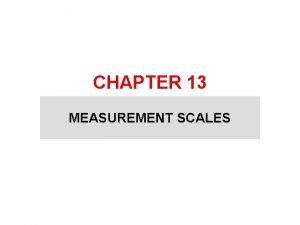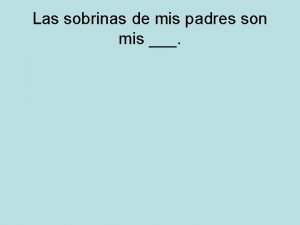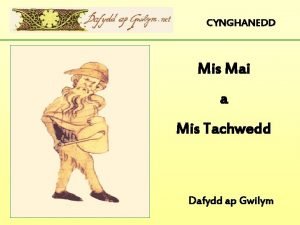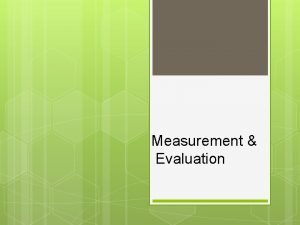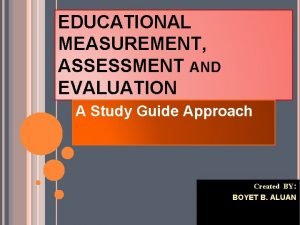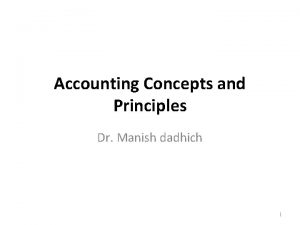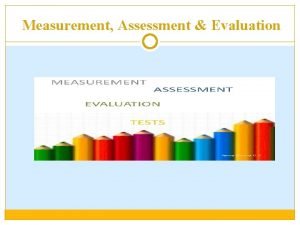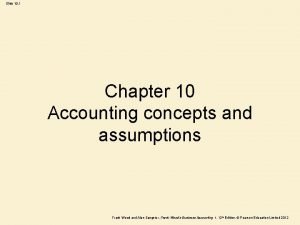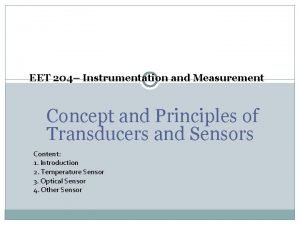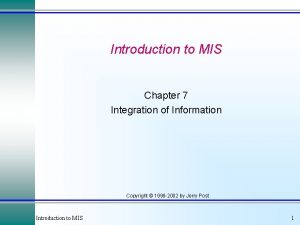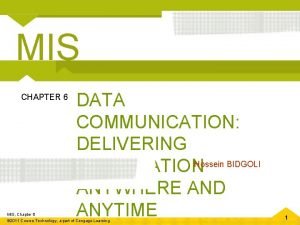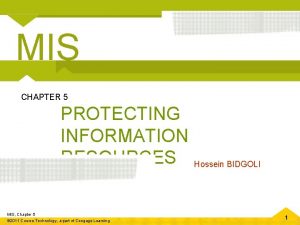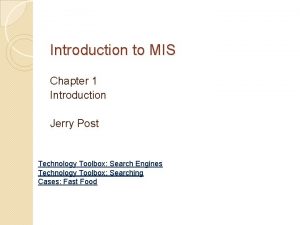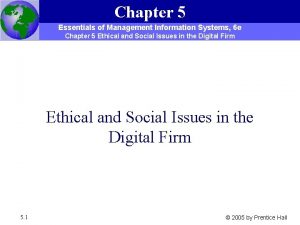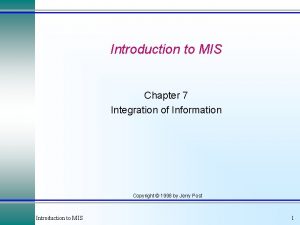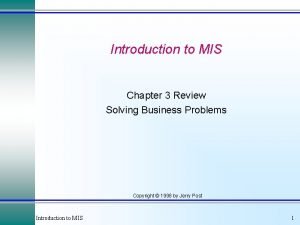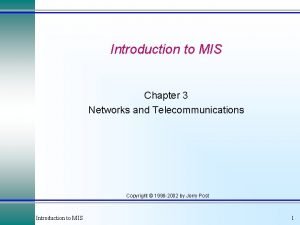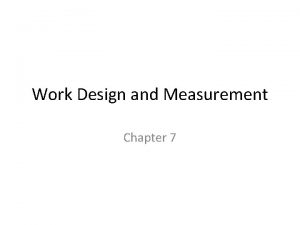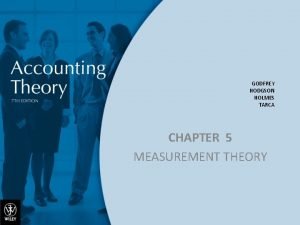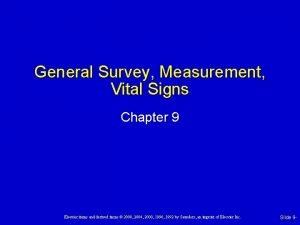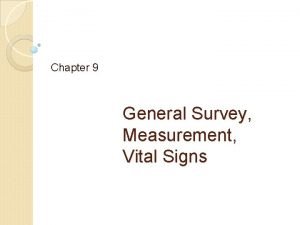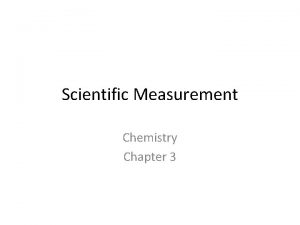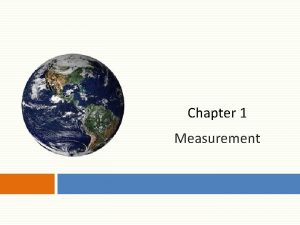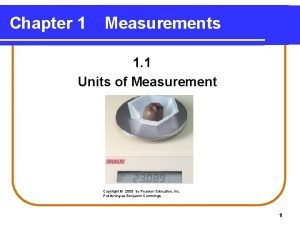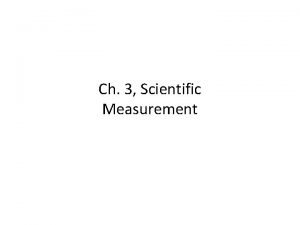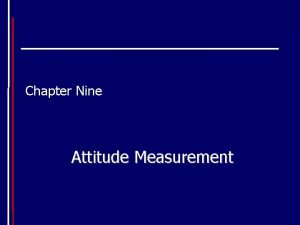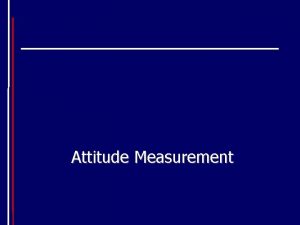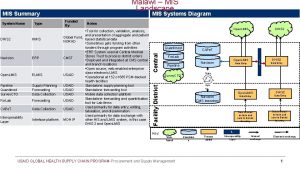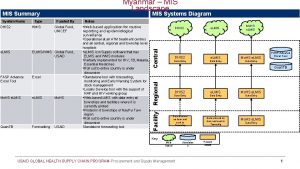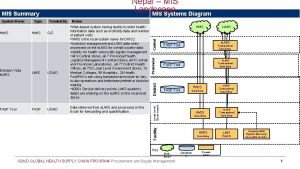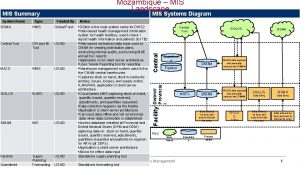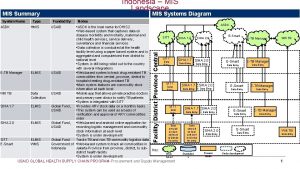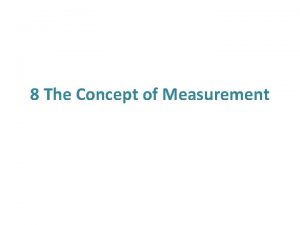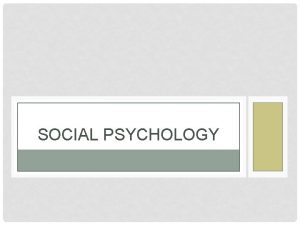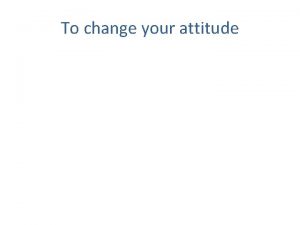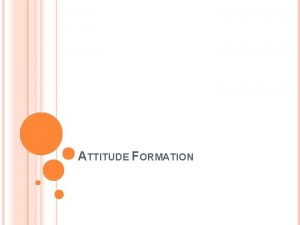Measurement Concept Chapter 14 Attitude Measurement MIS 1
![[ Measurement Concept ] Chapter 14. Attitude Measurement MIS 1학기 마케팅 1학기 국제경영 1학기 [ Measurement Concept ] Chapter 14. Attitude Measurement MIS 1학기 마케팅 1학기 국제경영 1학기](https://slidetodoc.com/presentation_image/0b0b5353498fb2f6b9cd571092659282/image-1.jpg)













































- Slides: 46
![Measurement Concept Chapter 14 Attitude Measurement MIS 1학기 마케팅 1학기 국제경영 1학기 [ Measurement Concept ] Chapter 14. Attitude Measurement MIS 1학기 마케팅 1학기 국제경영 1학기](https://slidetodoc.com/presentation_image/0b0b5353498fb2f6b9cd571092659282/image-1.jpg)
[ Measurement Concept ] Chapter 14. Attitude Measurement MIS 1학기 마케팅 1학기 국제경영 1학기 마케팅 1학기 조 성 이공주 장 춘 개위나

학습 목표 v Attitude 의 개념 이해 v Attitude 의 측정 기법 v Attitude 측정 척도(scale)의 종류 v 행동 강도(behavioral intention)의 측정 v 적절한 태도 측정 척도의 선택 chapter 14. Attitude Measurement

Contents 1 Attitude 의 개념, 구성 요소 2 가설적 구성으로서의 Attitude 3 Attitude 측정 기법 4 Rating scales 5 Ranking, Sorting 6 태도 측정 척도의 선택시 고려사항 chapter 14. Attitude Measurement

Attitude Meaasurement 의 중요성 P 307 - LEE 청바지는 엄마 바지? - 젊은 고객층 공략 방법을 알아내기 위해 Attitude research 실시 Þ 적절한 Attitude Measurement 와 마케팅 전략으로 영업실적 대폭 상승 chapter 14. Attitude Measurement

P 308 Attitude 의 개념 v Attitude 란? 어떤 대상이나 현상에 대해, 주어진 방법(응답 형식)을 통해 반응하는 것 v Attitude의 구성 요소 Affective component: 감정 Cognitive component: 인지, 지 식 Behavioral component: 행동의도 chapter 14. Attitude Measurement





측정기법 1. Rating scales P 310 • 가장 보편적으로 사용되는 척도 1) 2) 3) 4) 5) 6) 7) 8) 9) Simple Attitude Scales Category Scales Likert Scale Semantic Differential Numerical Scales Constant- Sum Scales Stapel Scales Graphic Rating Scales Thurstone Equal-Appering Interval Scale chapter 14. Attitude Measurement










p 315 1. 5 Numerical Scales의 예 현재 사용하고 있는 휴대폰의 품질을 평가해 주세요. 매우 좋다 7 6 5 4 3 2 1 매우 좋지 않다 ----------------------------------------------------- 직장 리더에 대한 평가 Pleasant Friendly Rejecting Tense Distant Cold Cooperative Supportive open 8 8 8 8 8 7 7 7 7 7 6 6 6 6 6 5 5 5 5 5 4 4 4 4 4 3 3 3 3 3 2 2 2 2 2 1 1 1 1 1 Unpleasant Unfriendly Accepting Relaxed Close Warm Uncooperative Hostile guarded chapter 14. Attitude Measurement

p 315 1. 5 Numerical Scales 특징 1. Point 수에 따라 명명함 ex. 5 -point numerical scale 단점 척도간 비중이 임의적으 로 배당되기에 서열적 특 성만 지님 2. Semantic Differential 과 함께 사용하면 효과적인 측정이 가능하다. (p 316 , 14. 4 참조) chapter 14. Attitude Measurement





1. 8 Graphic Rating Scales p 318 Line scale 비행기를 탈때, 각 항목별 중요도를 선위에 ‘X’로 표시하시 오. 착 석 감: Not Important ___________ Very Important 기 내 식: Not Important ___________Very Important 항공요금 : Not Important ___________Very Important chapter 14. Attitude Measurement

p 319 Best Possible life 1. 8 Graphic Rating Scales Ladder scale BEST POSSIBLE LIFE 10 9 8 7 6 5 4 3 2 1 0 WORST POSSIBLE LIFE chapter 14. Attitude Measurement

p 319 1. 8 Graphic Rating Scales “Happy face” scale 3 VERY GOOD 2 1 VERY POOR § 어린이들의 태도측정에 사용 § 어린이들은 극적인 선택(‘very good’ or ‘very poor’)을 하는 경향이 있기에, 정확한 측정이 어려움 chapter 14. Attitude Measurement














태도 측정 척도의 선택시 고려사항 p 324 3. Rating scale 로 측정시, 어떤 카테고리 라벨을 사용할 것인가? : p 312 의 카테고리 표 참조 4. 척도의 point 개수 결정 modern _ _ _ old-fashioned (3 point 척도) modern _ _ _ old-fashioned (5 point 척도) modern _______ old-fashioned (Graphical) chapter 14. Attitude Measurement




 Measurement marketing research
Measurement marketing research Attitude measurement in marketing research
Attitude measurement in marketing research 4 point likert scale interval
4 point likert scale interval Mis realidades mis valores proyecto de vida
Mis realidades mis valores proyecto de vida El sobrino de mi madre es mi ____
El sobrino de mi madre es mi ____ Mis mai a mis tachwedd
Mis mai a mis tachwedd Mis mai a mis tachwedd
Mis mai a mis tachwedd Cuales son mis creencias
Cuales son mis creencias Concept map of measurement assessment and evaluation
Concept map of measurement assessment and evaluation Prognostic test
Prognostic test Accounting assumption
Accounting assumption Boundary rules accounting
Boundary rules accounting Explain money measurement concept
Explain money measurement concept Concept of measurement assessment and evaluation
Concept of measurement assessment and evaluation 10 accounting concepts
10 accounting concepts Eet204
Eet204 Self ideal example
Self ideal example Contoh marketing concept
Contoh marketing concept Mis chapter 4
Mis chapter 4 Sharepoint 2001
Sharepoint 2001 Management information systems wiley
Management information systems wiley Mis chapter 6
Mis chapter 6 Mis chapter 5
Mis chapter 5 Management information system chapter 3
Management information system chapter 3 Management information system chapter 1
Management information system chapter 1 Introduction of mis
Introduction of mis Using mis 10th edition
Using mis 10th edition Mis chapter 3
Mis chapter 3 Introduction to mis
Introduction to mis Management information system chapter 5
Management information system chapter 5 Intranets and extranets in healthcare
Intranets and extranets in healthcare Mis chapter 8
Mis chapter 8 Mis chapter 7
Mis chapter 7 Mis chapter 3
Mis chapter 3 Mis chapter 3
Mis chapter 3 Work measurement techniques
Work measurement techniques Chapter 5 measurement theory godfrey
Chapter 5 measurement theory godfrey General
General Normal vital signs for all age groups
Normal vital signs for all age groups Chapter 8 section 3 earthquakes and society answer key
Chapter 8 section 3 earthquakes and society answer key Physical quantities
Physical quantities 3 scientific measurement
3 scientific measurement Chapter 1 measurement
Chapter 1 measurement Measurement 1 physics
Measurement 1 physics Chapter 1 measurement
Chapter 1 measurement Chapter 3 scientific measurement
Chapter 3 scientific measurement Work immersion example
Work immersion example


